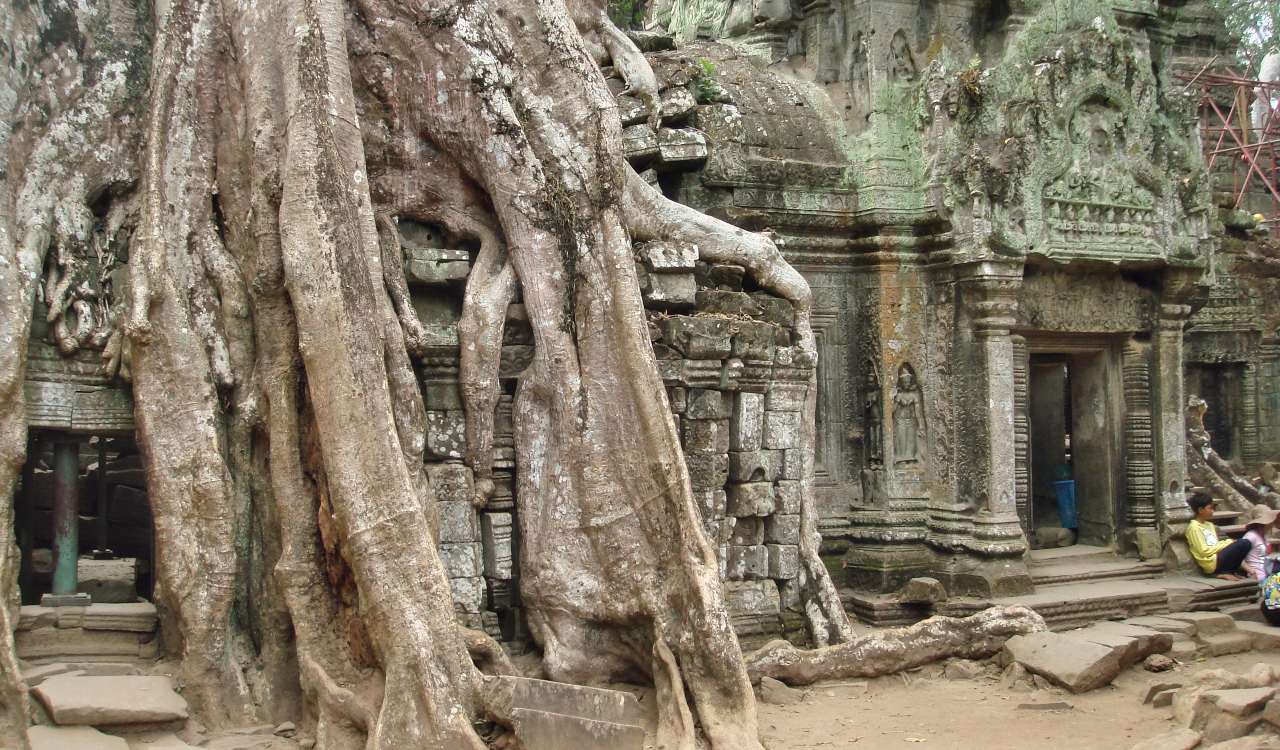
Ancient Angkor Wat
Awesome cycling destination for history buffs
Angkor Wat is the largest collection of religious buildings in the world, and will occupy your memories long after you have explored its temples and corridors. The architecture has been compared to that of Greece or Rome, and there are thousands of intricate designs and endless courtyards and passageways to explore. There are so many fascinating ruins, carved reliefs and sculptures here that we challenge anyone to walk away from this mysterious and ancient place without wanting to become an archaeologist!
Angkor was built in the early 12th century, as the state temple and it has remained a significant religious centre ever since, first as a Hindu place of worship and later as a Buddhist temple. It was built to withstand the test of time, and its balance of design and structure puts modern buildings to shame. It is one of the most important archaeological sites in Southeast Asia. Angkor Wat is so important to Cambodia that it even appears on the national flag, and has been designated a UNESCO World Heritage Site.
Scholars don't yet know all of this centuries-old temple complex's secrets, such as the mystery as to why it faces west unlike other temples. Some say it was built as a mausoleum for an ancient king. Whatever its origins these temples, each in varying states of ruin and slowly being taken over by creeping vines, will make you feel like Indiana Jones in search of a sacred treasure.
Warm and Friendly People
The Khmer people, who make up 90-95% of the population of Cambodia, are kind and welcoming, and have a rich culture and history. Their Theravada Buddhist beliefs have a strong influence on their hospitality and customs. Khmer culture includes distinctive forms of dance, architecture and visual art, which have influenced Laos and Thailand throughout the years.
When greeting someone, clasp your hands together like you are praying, and give a little bow. The higher in authority the person you are meeting, the deeper the bow should be. Immersing yourself in the culture and lifestyle of Cambodia will give you a heart-warming experience you will look back on with fondness.
Treat Yourself to Cambodian Flavours
Fresh fish from the Mekong and Tonle Sap rivers are a crucial staple in the Cambodian diet, always with the staple grain of rice. Cambodian cuisine also features plenty of succulent tropical fruit, juicy soups and spicy noodles.
The French influence can also be seen in Cambodian food, with toasted baguettes commonly dipped into red curries and eaten. Why not sample some delicious ka tieu, which is a pork broth soup with rice noodles, garlic, green onions, scallions and other option toppings such as shrimp or beef balls?


 PEDALERS
PEDALERS